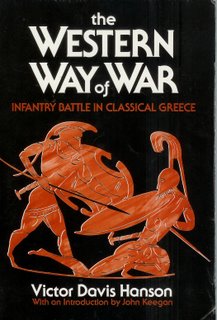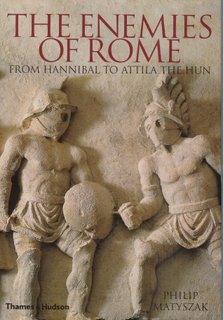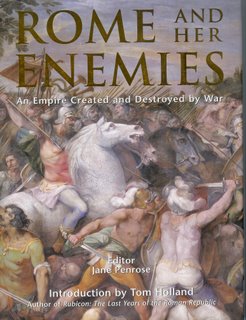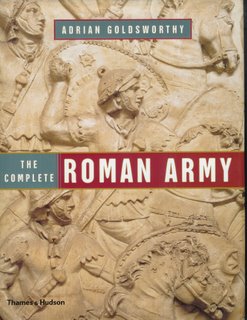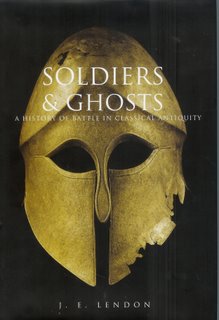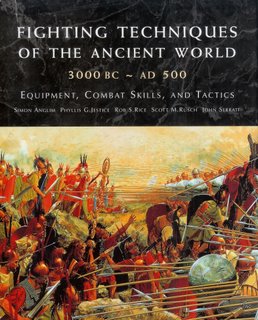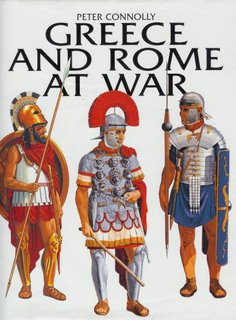Osprey Military Books
 The Roman Army from Caesar to Trajan
The Roman Army from Caesar to TrajanMichael Simkins - Ron Embelton
"Although the common Roman fighting men themselves have left no account, much literature has survived from antiquity. The wealth of archaeological finds, plus the study of surviving Roman sculpture has allowed historians to learn much about the nature of the Roman army which conquered m astonishing expanse of territory. Michael Simkins brings his substantial knowledge to bear on this fascinating subject, covering such topics as army composition, recruitment, training, campaign routine and providing a wealth of detail on weapons, uniforms and equipment."
----
 The Vikings
The Vikings[Elite 3]
Ian Heath - Angus McBride
"In this worthy addition to the Elite series, Ian Heath transports us to the time of the Vikings, examining their epic journeys and the ships they made them In, their methods of warfare, the organisation of their armies and tactics employed, their appearance and equipment and the general history of these fascinating warrior-explorers. His authoritative text is complemented by many fine illustrations and photographs including stunning full colour illustrations by Angus McBride, one of the world's most respected military artists."
---- The Normans
The Normans[Elite 9]
David Nicolle - Angus McBride
"Despite the small geographic extent of Normandy its people played a crucial role in the history of the medieval world. Ferocity, boundless energy, cunning and a capacity for leadership were their heritage, to which modern scholars would add supreme adaptability and a simple piety. Their amazing military successes resulted from careful planning, speed of movement, decisiveness, daring and sheer ruthlessness. Added to this was a strong business sense and an appreciation of the value of money. Veteran Osprey author David Nicolle describes the history, arms and armour of the remarkable Normans in this fascinating volume."
---- Greek and Roman Artillery 399 BC-AD 363
Greek and Roman Artillery 399 BC-AD 363[New Vanguard 89]
Duncan B. Campbell - Brian Delf
"The catapult (katapeltikon) was invented under the patronage of Dionysius I, tyrant of Syracuse, in the 4th century BC. At first only the arrow-firing variant was used, and it was not until the reign of Alexander the Great that stone-projecting catapults were introduced. The Romans adopted these weapons during the Punic Wars and further developed them, before introducing the new arrow-firing ballista and stone-throwing onager. This title traces the often controversial design, development and construction of these weapons throughout the history of the classical world."
---- Late Roman Infantryman 236-565 AD
Late Roman Infantryman 236-565 AD[Warrior 9]
Simon MacDowall - Gerry Embelton

